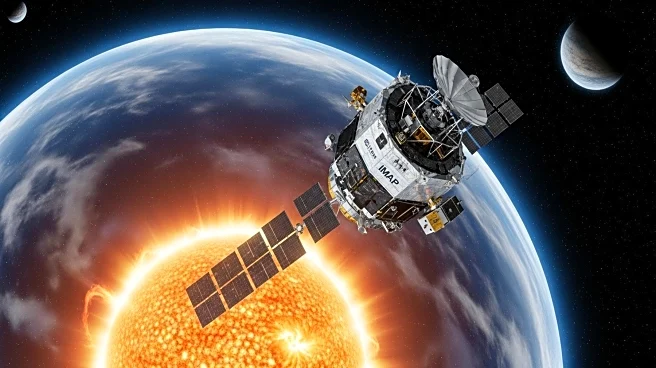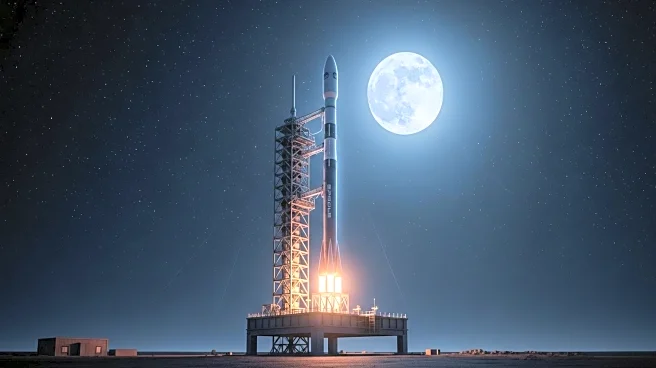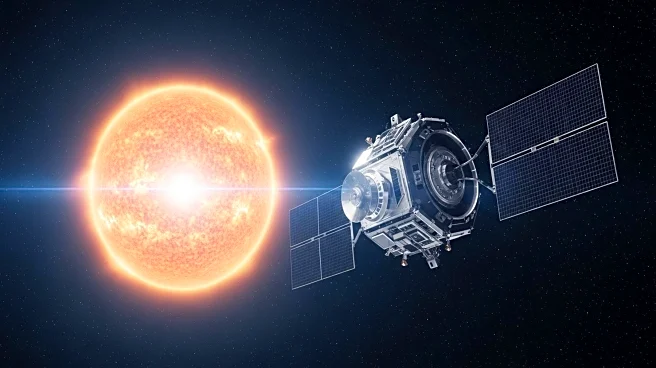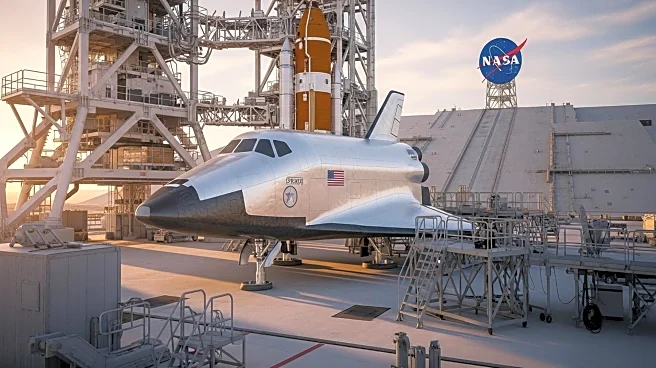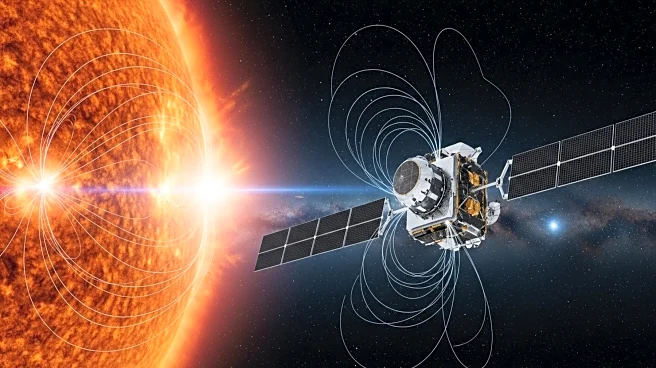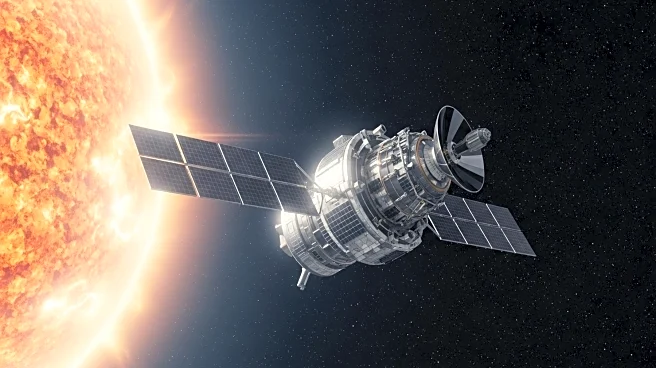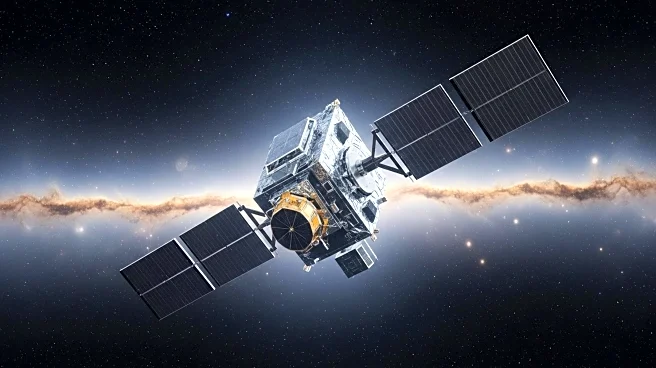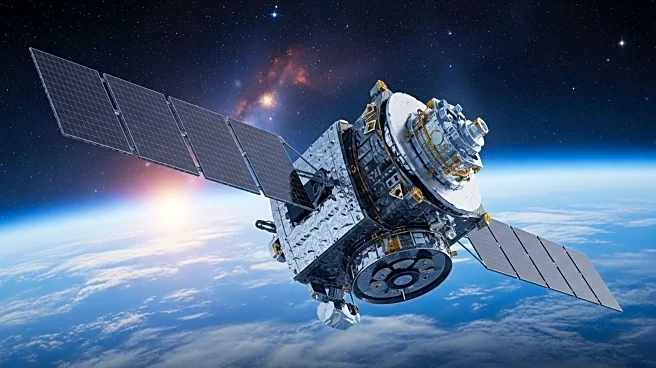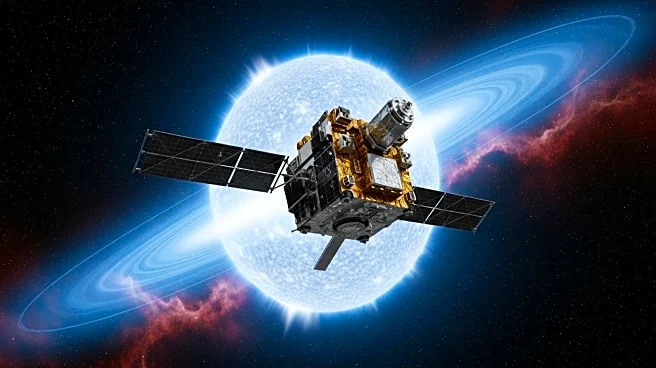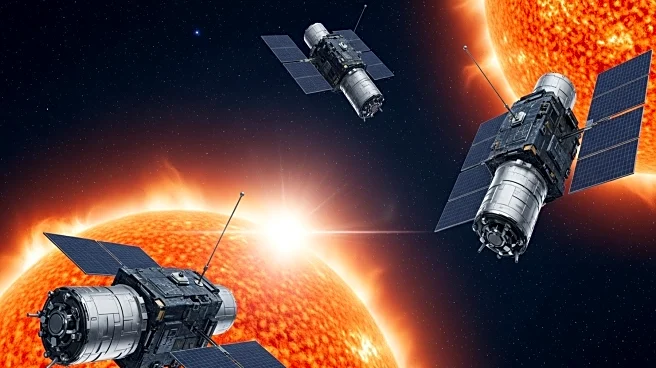What's Happening?
NASA's Interstellar Mapping and Acceleration Probe (IMAP) mission aims to study the heliosphere, a vast magnetic bubble created by the Sun that protects the solar system from harmful radiation. The IMAP observatory, equipped with ten science instruments, will travel to the Lagrange point (L1) to study particle acceleration and solar wind. This mission will provide real-time observations of space weather, offering approximately 30 minutes of advance warning for incoming radiation, crucial for future space missions like Artemis II and human flights to Mars. The IMAP mission builds on discoveries from previous missions, including Voyager and the Interstellar Boundary Explorer (IBEX), to enhance understanding of the heliosphere's dynamics.
Why It's Important?
The IMAP mission is significant for its potential to improve space weather forecasting, which is vital for the safety of astronauts and spacecraft. By understanding the heliosphere's boundary, scientists can better predict solar wind and radiation levels, which affect satellite operations and communication systems on Earth. The mission's findings could also aid in the search for life beyond our solar system by providing insights into how our solar system supports life. The collaboration between NASA and international partners highlights the global effort to advance space exploration and scientific knowledge.
What's Next?
The IMAP mission will continue to provide data that enhances space weather models and forecasting capabilities. As NASA prepares for the Artemis II mission and future Mars missions, the real-time observations from IMAP will be crucial for ensuring the safety of astronauts. The mission's success could lead to further exploration of the heliosphere and its impact on space travel, potentially influencing future space policy and international collaboration in space exploration.
Beyond the Headlines
The IMAP mission's exploration of the heliosphere could have long-term implications for understanding cosmic radiation and its effects on human health and technology. The mission's data may contribute to developing new technologies for radiation protection in space, benefiting both astronauts and Earth-based industries reliant on satellite technology.

